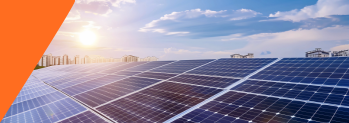Bifacial solar panels are an advanced type of photovoltaic (PV) technology designed to capture sunlight from both sides of the panel, rather than just the front. This innovative approach enhances energy generation by utilizing reflected light from the ground or surrounding surfaces, in addition to direct sunlight. Here is a closer look at how bifacial solar panels work and their unique benefits:
How Bifacial Solar Panels Work?
Unlike traditional monofacial panels, which only absorb sunlight from one side, bifacial panels feature a double-sided design. They typically have a transparent backsheet or dual glass layers that allow light to pass through and be absorbed by photovoltaic cells on both the front and rear sides.
The efficiency of bifacial panels is largely influenced by their installation environment. Key factors include:
Applications and Suitability
Bifacial solar panels are particularly well suited for large-scale commercial and industrial solar installations, as well as residential setups where maximizing energy production is crucial. They are also ideal for installations in areas with high-ground reflectivity, such as snow-covered regions or reflective rooftops.
Advantages of Bifacial Solar Panels
1. Enhanced Energy Efficiency
The primary advantage of bifacial solar panels is their ability to capture sunlight from both sides. This feature increases energy production by up to 30%, depending on the installation conditions, such as ground reflectivity and tilt angle.
2. Longevity and Durability
Bifacial panels are typically built with robust materials such as tempered glass on both sides, offering greater protection against environmental factors like hail, high winds, and extreme temperatures. This durability translates into a longer lifespan, often accompanied by extended warranties from manufacturers.


Disadvantages of Bifacial Solar Panels
1. Higher Initial Cost
One of the significant drawbacks of bifacial solar panels is their cost. Due to the advanced materials and technology involved, these panels are more expensive upfront compared to traditional solar panels. However, this higher initial investment can often be offset by the increased energy production over time.
2. Complex Installation Requirements
Bifacial panels require careful consideration of their installation environment to maximize their efficiency. Factors such as ground surface reflectivity (albedo), tilt angle, and elevation need to be optimized. This complexity may necessitate professional installation, adding to the overall cost.
3. Weight and Handling
The double glass construction that enhances durability also makes bifacial panels heavier and more challenging to handle during installation. This might increase labor costs and the need for specialized mounting equipment.
Bifacial solar panels represent a significant leap forward in solar technology, offering increased efficiency, durability, and aesthetic appeal. While they come with a higher upfront cost and more complex installation requirements, the long-term benefits—especially in terms of energy output—make them a compelling choice for both residential and commercial solar projects.




